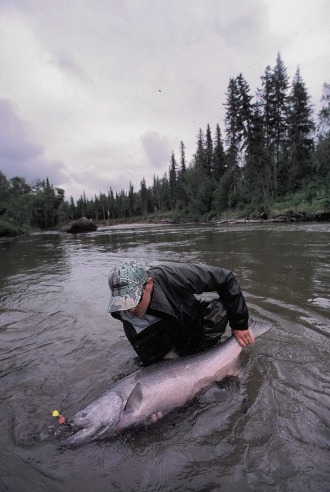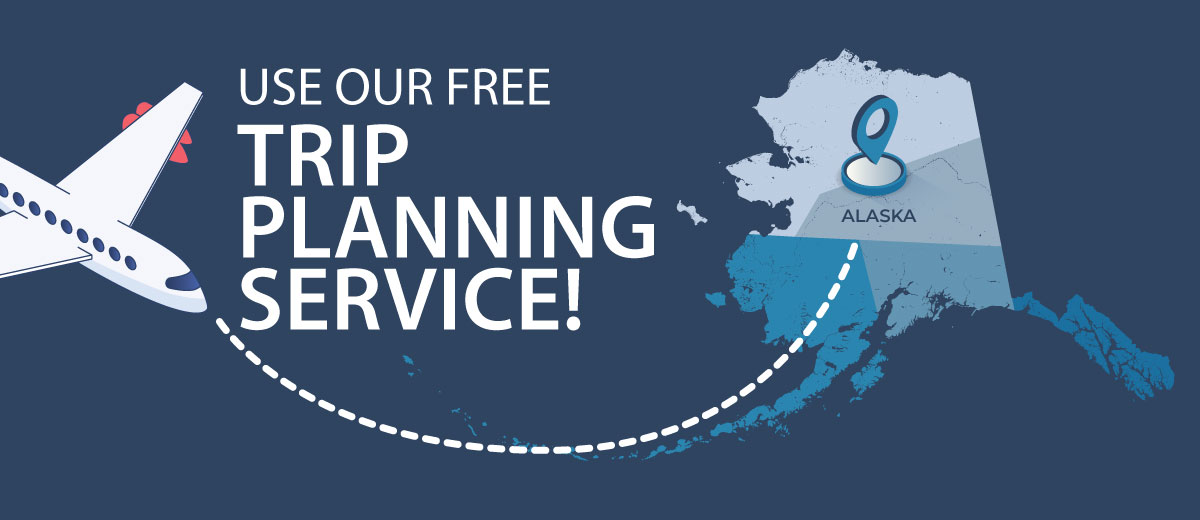Today’s Conservation Blog comes to us from Kenai and Kasilof river guide Mark Glassmaker. The management review facts are from the 2012 king salmon season on the Kenai.
Whether you are a weekend warrior, a casual sport angler, a guide, a local business owner or even just a parent of a young person that might one day hope to experience the thrill of catching a king salmon on rod and reel, you should understand that the time is now to accept and shoulder the burden of conservation to ensure these important fish do not disappear from our ecosystem. 
Sharing the burden
As many are aware, in-river restrictions this season have been widespread and severe:
-The Kenai River was closed to all fishing for king salmon starting on June 22.
-The Kenai River late run will begin with no bait on July 1. This is the first time this has ever occurred and will result in at least a 50% reduction in harvest.
-The Kasilof River has been restricted to no bait and single hook until July 1, reducing catch rates by up to 90%.
-All king salmon sport fisheries in the Susitna Drainage have been closed to all fishing through July 13.
-Kasilof sub-district and Upper Cook Inlet set gillnets were closed by emergency order on Monday, June 25 but may be allowed to fish their regular openings on Thursday June 28 despite king salmon abundance levels for the Kenai and Susitna Drainages tracking well below average and the increasing likelihood that escapement goals will not be met Inlet wide.
-Despite these sacrifices in-river and the dramatic effect this has had on our local economies, commercial fishing may still be allowed to fish their regular openers and possible “emergency openers”.
Important facts about sport fishing, our local economies and commercial fishing:
-Sport fishing yields nearly 1.4 Billion dollars for the State of Alaska.*
-Sport fishing yields some $720 million dollars for Cook Inlet alone.*
-The estimated population of the Kenai Peninsula is 60,000 people.
-The State of Alaska sold 171,399 king salmon stamps in 2011 for a combined revenue of 2.8 million dollars.
-In 2012, there are 570 commercial drift gillnet permits in Cook Inlet.
-In 2012, there are 730 commercial set gillnet permits in Cook Inlet.
Important facts about ADF&G management of king salmon in Cook Inlet and the Kenai and Kasilof Rivers
-Enumeration of Kenai king salmon via split beam sonar technology has been proven less accurate than current Didson sonar and many past management decisions have been based on inaccurate data.
-The escapement goal of 5,300 to 9,000 early run Kenai River king salmon is too low to sustain itself in years of low abundance and needs to be raised.
-Alaska Department of Fish and Game continues to run in-river test netting programs to enumerate and study Kenai and Kasilof king salmon despite proven high levels of mortality associated with these programs.
-Alaska Department of Fish and Game has continued to use restrictions in-river as the primary management tool to bear the burden of conservation while still allowing excessive commercial set gill net fishing to occur on the East Side of Cook Inlet: despite not being certain in-river escapement goals are being achieved.
-Alaska Department of Fish and Game should join the fight to stop excessive by catch of Alaska bound king salmon in both the Gulf of Alaska and the Bering Sea by commercial trawl and pollock fisheries. According to a report by the North Pacific Fishery Management Council, from 1990 through 2001, the Bering Sea Chinook salmon by catch average was 37,819 salmon annually. Since 2002, chinook salmon by catch numbers have increased substantially. The average from 2002 to 2007 was 82,311 Chinook salmon, with a by catch peak of 122,000 Chinook salmon in 2007.
The time to act is now!
If you think you are powerless in this time of crisis, you are wrong. Your voice and your vote is the most powerful tool in this entire process. Our governor and our state legislators need to hear from YOU, THE CITIZENS OF ALASKA as your voice and your vote is the direct connection to them being elected and retaining their job. Please act today not only on behalf of the resource but ultimately for all the small business owners, all the citizens of Alaska and the United States and ultimately for future generations so they too can see our formerly prolific salmon runs restored to robust and sustainable levels.
Please contact by phone, email or mail any and all of the following people and voice your own personal concerns on this timely and important topic. Remember, tomorrow may be too late!
Governor:
Sean Parnell
sean.parnell@alaska.gov,
http://gov.alaska.gov/parnell/contact/email-the-governor.html
ADF&G Commissioner: Cora Campbell
Division of Sport Fisheries
Director
Charlie Swanton (907) 465-6184
charles.swanton@alaska.gov
Regional Fisheries Management Coordinator (Cook Inlet)
Tom Vania (907) 267-2131
tom.vania@alaska.gov
Division of Commercial Fisheries
Director
Jeff Regnart (907) 267-2350
jeff.regnart@alaska.gov
Board of Fish members:
Board of Fish Executive Director
Monica Wellard
monica.wellard@alaska.gov
* Economic impacts and contributions of sportfishing in Alaska, 2007 …
http://www.adfg.alaska.gov/static/home/library/pdfs/sportfish/2007economic_impacts_of_fishing.pdf
This study can be found on ADF&G web page and it was done by Southwick Associates, Inc and William J Romberg.


